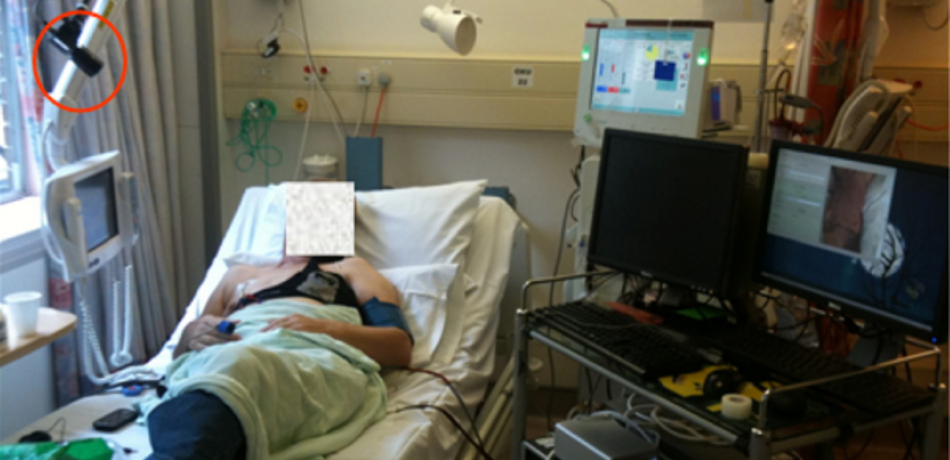Laboratory for Computational Medicine and Technology Research

Research
Non-contact cardiorespiratory monitoring

We have demonstrated the feasibility of estimating heart rate and respiratory rate from computer analysis of the data recorded with a digital video camera in clinical environments. Clinical data for validating our algorithms in adults have been acquired by monitoring patients undergoing haemodialysis in the Oxford Kidney Unit and preterm infants in the Oxford Neonatal Intensive Care Unit. We aim to extend this work to derive estimates of cardiac output (using differential pulse-transit times) and maps of peripheral perfusion.
Detection of adverse physiological events

We are currently working to extend our analysis to clinically-relevant adverse events. We are particularly concerned with the detection of the onset of sepsis and the respiratory pauses induced by apnoea of prematurity. The goal is to create novel tools for automatically analysing the relevant features in the camera-derived vital signs, and thus overcome the challenges of detecting these events in settings where the conventional monitoring tools are inadequate or unavailable.
Subject detection for continuous monitoring

Patient detection and skin segmentation are important steps in non-contact vital sign monitoring as skin regions contain pulsatile information required for the estimation of vital signs. Previous methods based on face detection or colour-based image segmentation are less reliable in a hospital setting. We are currently working on state-of-the-art detectors which rely on deep learning architectures, namely Convolutional Neural Networks (CNN), in order to achieve segmentation results robust to different skin tones and changes in subject pose, lighting, and routine interaction of clinical staff.
Novel methods for the assessment of pain

Infants of all gestational ages undergo several painful procedures during their stay in the intensive care unit. Pain assessment in premature infants is a difficult problem for health professionals, parents, and researchers. Infant pain scales often require observation of very precise and detailed behaviours (i.e., specific facial movements) or specific physiological changes (i.e., heart rate). They also require observation over a prolonged period of time. We are currently working to reproduce pain measures using a camera monitor so that pain responses can be seamlessly incorporated into neonatal clinical practice.
